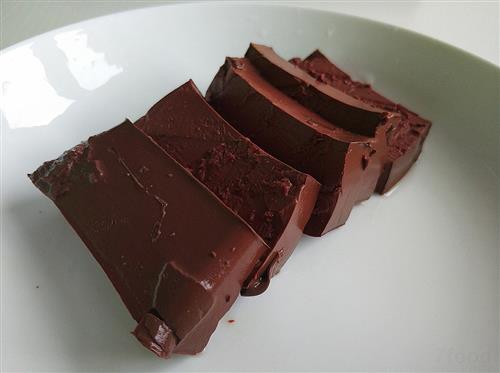Recently, consumers have reported that 90% of duck blood in the Beijing market is fake duck blood, even fake duck blood containing formaldehyde. CCTV reporter conducted an on-the-spot investigation. At a spicy stall on the street of supermarkets in the farmers' market of Haidian District, the boss told the reporter bluntly. “The duck blood is all fake and there are a lot of pig blood inside.†The Comprehensive Testing Center of the Chinese Academy of Sciences Chaoyang District, Beijing, conducted tests on six blood samples of ducks brought back from reporters at Mala Tang, Bianbu Xia, and Xiaomiaodian. The test was conducted to determine whether “false†and “ Whether to add formaldehyde "two indicators. The results of the report showed that three of the duck blood samples were found to be porcine-derived components, that is, they were suspected of using pig blood as fake blood for falsification. In addition to the three duck blood samples being detected for frauds in pig blood, there was also a test report showing that pig blood used in Mala Tang detected a higher content of formaldehyde, containing 7 mg of formaldehyde per kg, which was higher than the national minimum detection standard. 2 mg. How is "poison duck blood" made? According to previous media reports of "drug duck blood" operators accounted for: first soaked in formalin in pig blood for preservation, remove and drain to join the industrial gelatin and starch, a soft rotten pig blood becomes Compact. After the food is protected, it can be colored. After the “swollen milk†of the coloring agent, a “broiled duck blood†with a bright color and a full supply will be processed. The harm of formaldehyde Formaldehyde, as a chemical substance, is playing a more and more extensive role in people's daily life, infiltrating all aspects of people's food, clothing and housing. Formaldehyde may have been a hazard in the past, focusing on residues in the process of home decoration or garment processing. Its main features are low concentrations of persistent respiratory or skin contact, clinically accompanied by transient eye mucous membrane and respiratory irritation, or It is skin contact dermatitis. However, formaldehyde-soaked pig blood carries formaldehyde directly into the human digestive tract and may cause damage that is different from respiratory or skin contact. In 2004, the World Health Organization announced that formaldehyde has a carcinogenic effect and ended the controversy over whether formaldehyde is carcinogenic or mutagenic. Studies have reported that formaldehyde may cause human injury at low dose levels. While the toxicity of formaldehyde is dose-dependent, high concentrations of formaldehyde can cause cell necrosis; lower doses of formaldehyde can cause cross-linking between DNA and proteins, and in the process of replication and transcription, DNA that is cross-linked with proteins often cannot be correlated. The enzyme recognizes, which causes abnormal expression of certain important genes and even induces tumors. Some researchers have reported that subchronic exposure of rats to formaldehyde has shown that when the concentration of formaldehyde is 6 ppm, the cell cycle, apoptosis, and DNA repair-related gene reactivity increase expression, and formaldehyde can significantly increase the nose at 10-15 ppm. Mucosal cell proliferation activity. The “formaldehyde duck blood†counterfeiters artificially caused the opportunity for formaldehyde to directly enter the digestive tract of the human body, and medical studies confirmed that formaldehyde is easily absorbed into the body through the human digestive tract. Clinical observations have confirmed that certain concentrations and certain doses of formaldehyde intake may cause chemical burns to the human upper digestive tract. Formaldehyde, as a chemically and biologically active substance, will combine with the protein in the pig's blood during the process of soaking the blood of pigs, plus the process of cleaning, warming, etc. before consumption, which may reduce its directness to a certain extent. Corrosion effect. But consumers are a broad group, "formaldehyde duck blood" is not a gospel on the human gastrointestinal mucosa; especially patients with gastrointestinal diseases, "formaldehyde duck blood" intake must be worse. Corresponding medical epidemiological investigation confirmed that the incidence of peptic ulcer and gastric cancer in young adults has been rising. Although there is no evidence that all are "formaldehyde duck blood" contributions, which will include work pressure, Helicobacter pylori and environmental factors as a whole, but the emergence of "formaldehyde duck blood", who can say that it is not a cumulative promoter? ? â– Links: In daily life, when cooking dishes, there are a lot of duck blood as the main raw material, such as duck blood tofu soup, fried duck blood, duck blood noodles fried, duck blood Pleurotus eryngii, sharp pepper duck blood, which duck blood fans soup It is a famous snack in Huaiyang area. The following chart provided by the researcher Ma Guansheng, deputy director of the China Center for Disease Control and Prevention's Institute for Food Nutrition and Safety, shows the nutrients in pig blood and duck blood. Probiotics are a class of active microorganisms that are beneficial to the host by colonizing the human body and changing the composition of the flora in a certain part of the host. By regulating the immune function of the host mucosa and system or by regulating the balance of intestinal flora, promoting nutrient absorption and maintaining intestinal health, resulting in the production of single microorganisms or mixed microorganisms with well-defined composition that are beneficial to health. Probiotics,Probiotic Efficacy,Probiotic vitamins,Probiotic Health Supplements YT(Xi'an) Biochem Co., Ltd. , https://www.ytherblifes.com